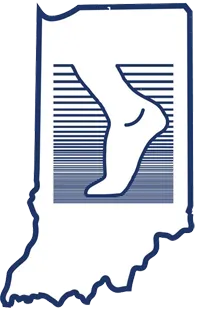A bunion is a bump on the joint of the big toe — called the metatarsophalangeal (MTP) joint — that forms when the bone or tissue on that joint moves out of place and extends out beyond the normal anatomical curvature of the toe. Because this joint carries much of the body’s weight while walking, bunions can cause debilitating pain if left untreated. Unfortunately, bunions do not go away over time. In fact, if you ignore it, the condition will only get worse ... and worse ... until the pain is so debilitating you have no choice but to see a podiatrist.
Bunions are brought about by years of abnormal motion and pressure on the MTP joint brought on by the way we walk, our genetic foot type or our shoe choices. People who suffer from flat feet or low arches are also at added risk along with arthritic patients and those with inflammatory joint disease. Typically, we treat many younger women who have

How can I get rid of it?
We will initally recommend selecting a shoe with a wide and deep toe box. Stay away from shoes with heels higher than two inches. Custom Orthotics may be useful in controlling foot function and may reduce symptoms and prevent worsening of the deformity. Apply an over-the-counter, non-medicated bunion pad around the bunion any time you wear a shoe. If your bunion is inflamed and sore, apply ice packs several times a day to reduce swelling.
If these initial efforts fail, it’s time to see a podiatrist who specializes in bunion therapy. Initially, the podiatrist may prescribe an anti-inflammatory drug and/or cortisone injection to reduce pain and inflammation. Ultrasound therapy is also a popular technique for treating soft tissue damage.
Surgical options for the most serious bunions
When these doctor-prescribed therapies fail, podiatric surgery may be needed to permanently relieve pressure and repair the toe joint. A bunionectomy will remove the bony enlargement, restore the normal alignment of the toe joint, and alleviate the pain. But understand, the short-term recovery from this type of surgery takes time and discomfort can last several weeks.
Prevention tips
The best defense against bunions is to prevent them:
• Avoid shoes with pointed triangular tips and wearing high heels for extended periods of time each day.
• Know your “real” shoe size (today) which can increase with age, weight gain and pregnancy.
• See a board-certified podiatrist at the first sign of a bunion deformity.
Like any medical condition, treating bunions early on saves time, discomfort and money down the line. Seek treatment now before the condition worsens and a more invasive course of action is needed.
